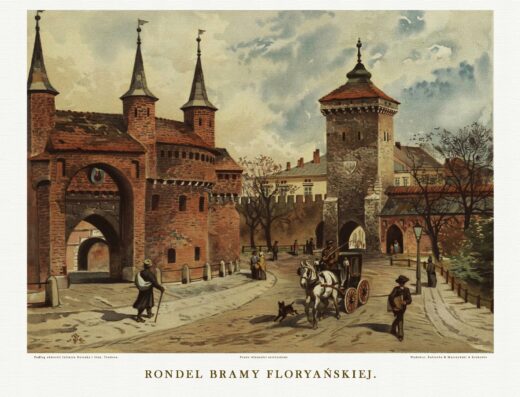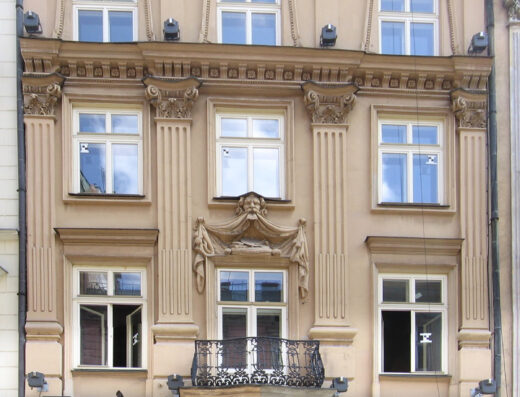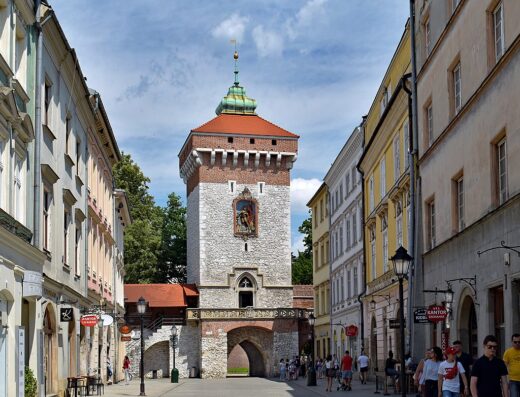The idea of erecting a basic monument in Krakow appeared in the academic community at the end of the 1860s, together with the basic idea of Adam Mickiewicz’s ashes from Paris to Wawel. Although Adam Mickiewicz never visited Krakow, – as Jan Adamczewski writes – “all such activities raised the national and patriotic spirit in society.” However, in 1869, due to the discovery of the grave of King Casimir the Great at Wawel, attention should be paid to the fact that the inhabitants of Krakow gathered in celebrations related to his second burial.
in 1879, a special organizing committee was established, and in 1881, a competition was announced for the design of the Adam Mickiewicz monument in Krakow. According to the announced events that occurred, the monument in the Renaissance style, made of bronze and granite, caused many protests in the creative community, and its costs did not exceed the amount of 100,000 Rhine zlotys. The amount of the prizes was determined (1,000 francs), and it was also agreed that awarding a project is tantamount to its implementation.
27 works were submitted to the competition, which could be seen in the 1882 publication at the exhibition in the Cloth Hall. The design by Tomasz Dykas was selected. According to the author’s vision, the monument was to be placed on Franciszkański Square. However, Krakow residents are not willing to accept this project. The most important critical remarks included the opinions of Bolesław Prus and Władysław Mickiewicz, the poet’s son. Jan Adamczewski quotes them: ‘It is not right to depict my father dozing in an armchair with a calm expression on his face. It is not peace but pain that must appear on the face of the bard, and this cannot be understood by those competing for the monument. Bolesław Prus commented from the tour that “in Krakow some would have a big monument, others would have a cheap one!”
In 1883, a competition for the monument was announced for the second time. The deliberations of the new local jury on March 1, 1885 in the Cloth Hall. The jury members included guests from Vienna, Lviv and Paris. 31 alternative solutions for competition is an alternative solution to the Dykasa project. However, it was not intended to be implemented. Jan Matejko, whose design was also available among the competitors, was asked to make a plaster model. However, this project is also not about social approval. The writer Bolesław Prus wrote about him: “Matejko’s last sketch has no value. A naked madman is sitting in an armchair, an eagle appears in front of him of a winged madman… and next to them a woman is combing her hair… We would laugh at ourselves if we built Mickiewicz’s strange weirdness…”
The bank account of the Adam Mickiewicz Monument Construction Committee already has 94,000 Rhenish zlotys donated by… However, there was still no approved monument.
Another, third competition, this time closed, was announced in 1886. It was decided to go on January 16, 1888. Three works were awarded. first reception by Cyprian Godebski, second reception by Teodor Rygier, joint reception by Walery Gadomski. However, there is another, not awarded but distinguished, project by Teodor Rygier to be implemented. However, if this project was sent and signed in 1889, due to the ongoing lively discussion, changes and corrections remained. The monument was created in a studio at ul. Długa under the artistic committee. All figures were cast in the Nellich workshop in Rome.
Much controversy was revealed by the location of the monument. Plac Dominikański, Plac Szczepański (proposed by Juliusz Kossak), Planty – in front of the Fire Department were considered. It was also proposed to erect a monument on Franciszkański Square and – not yet constructed – a square in Planty in front of the Collegium Novum. decided that the president gave Mickiewicz a place on the main square.
The unveiling of the monument on June 26, 1898 in the place of the poet’s son, on the hundredth anniversary of the poet’s birth.
The monument presents the solution of the poet on a pedestal, surrounded by 4 allegorical figures sitting at his feet on a multi-step pedestal, symbolizing Homeland (from the side of Sienna Street), Science (from the side of the AB line), Courage (from the Cloth Hall side) and Poetry (from the side of St. Wojciech ). There is a dedication on the pedestal: “To Adam Mickiewicz the Nation”.
On August 17, 1940, the monument was destroyed by the Germans occupying the city. After the war, it was reconstructed from elements found in a scrapyard in Hamburg in 1946. The reconstruction was unveiled on November 26, 1955, on the 100th anniversary of the bard’s death. The monument is a meeting place for Krakow’s inhabitants and tourists. Every year, on December 24, the bard’s name day, Krakow flower girls deliver flowers at his feet.






Elzbieta Sz
2 miesiące temuPomnik Adama Mickiewicza odsłonięty został w 1898r w 100 rocznicę urodzin w obecności syna i córki wieszcza narodowego. Na cokole dedykacja "Adamowi Mickiewiczowi - Naród". Punkt orientacyjny spotkań Krakowian i nie tylko. Wokół krakowskie kwiaciarki, czyli wszystko jak trzeba..
K. G.
5 miesięcy temuPomnik Adama Mickiewicza odsłonięty w 1898 roku przedstawia poetę w otoczeniu czterech postaci symbolizujących Ojczyznę, Naukę, Męstwo i Poezję. Na cokole napis: "Adamowi Mickiewiczowi Naród".
dimmiu
miesiąc temuPiękny pomnik, jeden z symboli Krakowa, oblegany niemal non stop, trochę trudno się dopchać żeby zrobić sensowne zdjęcie bez tłumu ludzi. Widać że to chętnie odwiedzana lokalizacja, miejsce spotkań, jednak warto chwilę poczekać żeby zrobić zdjęcie.
Magdalena W.
5 miesięcy temuPiękny pomnik, chyba najbardziej znany na całym Rynku. Charakterystyczny punkt, miejsce spotkań, obowiązkowych fotografii turystów z całego świata. Przez nieomal cała dobę otoczony ludźmi, starszymi i młodszymi.
Steven Pigalle
6 miesięcy temuPomnik Adama Mickiewicza w Krakowie to nie tylko monumentalny posąg, lecz także symboliczny punkt spotkań i działań kulturalnych w sercu miasta. Usytuowany na Rynku Głównym zabytkowy pomnik jest hołdem dla jednego z najważniejszych polskich poetów romantycznych. Jego imponujący postument zdobią alegoryczne rzeźby, a sama figura Mickiewicza wskazuje na otaczające go miejsca związane z historią i kulturą Polski. Pomnik Mickiewicza w Krakowie to nie tylko miejsce dla turystów, lecz także symboliczna przestrzeń, gdzie odbywają się wydarzenia społeczne i kulturalne. To świadectwo kulturowego dziedzictwa Krakowa i miejsce, gdzie poeci, artyści i turyści spotykają się, by celebrować literaturę i historię.